1 - Expected post-Chinafy results
How do I check if my website works in China?
Updated in July 2025.
Without physically being in China, it's hard to evaluate exactly how exactly your website loads.
What does it mean for a site to “work” in China?
From a performance perspective, we consider a website “functional” when users in China can load it visually, if not fully, in no more than 5 seconds* and interact with all primary features, like content, images, dynamic components, and more as long as we assume that content is not officially blocked
If a page loads slowly, partially, or breaks entirely, it’s not delivering a consistent or usable experience for users in China.
*Note that how a website is built may impact how fast it can load by default, whether or not it is loaded from China. A website that is slow loading outside of China where there are no specific friction points, will mean that it will load even more slowly if at all from China without optimization efforts.
Which web performance metrics matter most for China?
Some of the key web perf metrics it’s important to measure and analyze include:
Time to First Byte (TTFB) - the time between when a browser requests a page to the moment it receives the first byte of information from the server. If you’re seeing a high TTFB in China, it suggests extra round-trip latency due to China’s network setup.
First Contentful Paint (FCP) - when the browser renders the initial content from the Document Object Model (DOM), signifying the point at which the user first perceives that "something is loading." A long delay might mean third-party resources are struggling to load in China.
Largest Contentful Paint (LCP) - the time until the largest hero element (image, video posted, H1 etc.) is visible. If LCP never fires or is significantly delayed, it’s possible that the element can’t be fetched in China due to a blocked, slow or restricted domain.
Cumulative Layout Shift (CLS) - the sum of unexpected layout shifts during load. Higher CLS in China points to late-loading images or web-fonts.
Page Weight - the total bytes transferred for HTML and all assets. Smaller weight in China compared to non-China locations often means some resources have timed out.
Number of resources - the total network requests during load. In China, a number of components may be missing and you may see a larger drop-off than for other locations.
Page Complete - when the page load event is fired, and there are fewer than two resources loading. This marks the cutoff for page load time assessment, indicating a point of relative completion in the loading process.
Why websites don’t work in China
Websites built outside of China (and even some built onshore inside Mainland China) often hear from Chinese visitors that their experience is painfully slow or that the site is inaccessible in mainland China. THis primary stems from two key issues:
Infrastructure-based incompatibilities: China is geographically distant from most UK data centers, resulting in high round-trip times. China’s internet infrastructure operates through a small number of state-affiliated ISPs with limited international interconnectivity and strict network controls. These factors create additional layers of congestion, packet loss, and unpredictable latency, making performance optimization for China uniquely complex compared to other regions.
Code-level incompatibility: UK websites frequently rely on third-party services that don’t function well or are blocked in China (like Google Fonts, Vimeo, Instagram plugins and many more).
Here are some ways you can test your site in China.
1. Global Speed Test
Link: www.chinafy.com/tools/global-speed-test
This test has 3 servers in China (18 globally) which allow you to test the speed of your site(s) from around the world using various types of connections (i.e. 3G, LTE, Wifi).
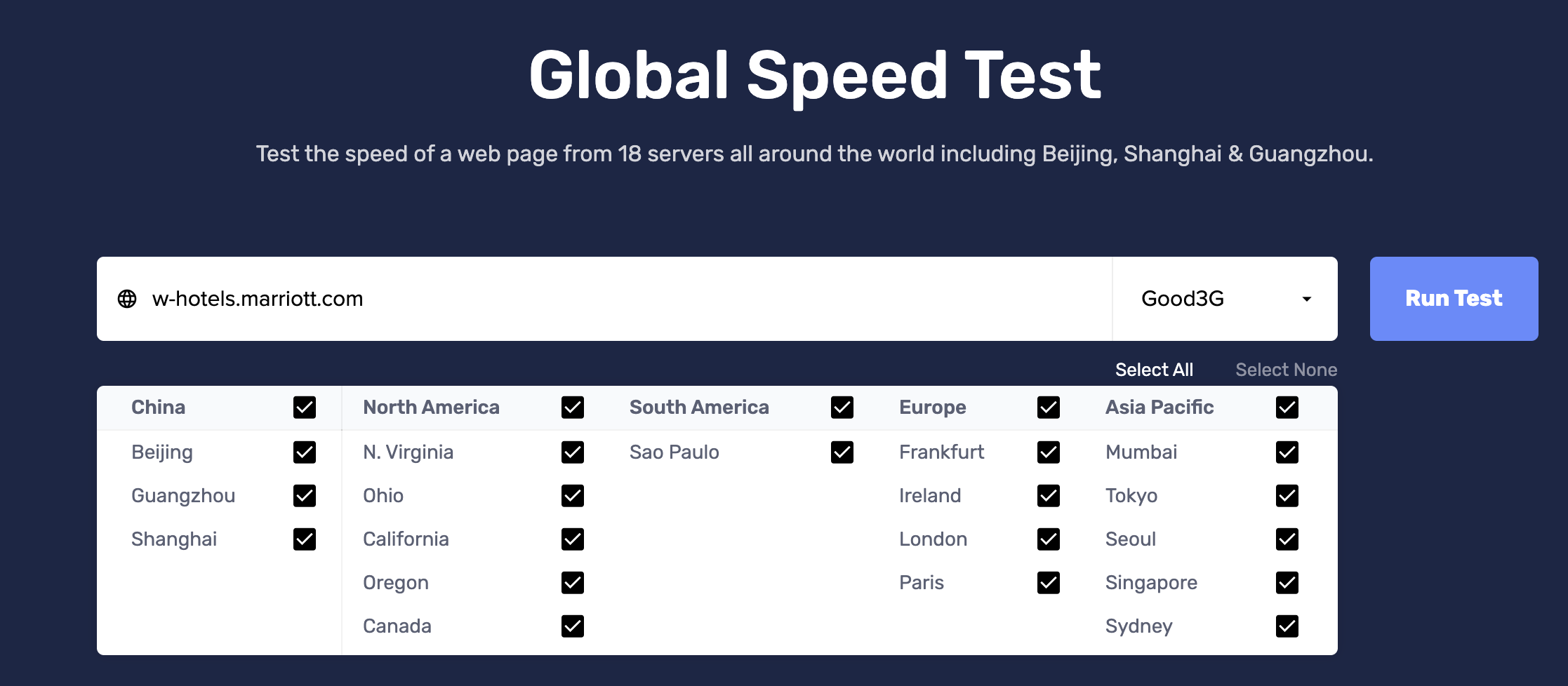
Compare loading time, TTFP, First Paint, Time to Interactive, page size and number of resources across locations in China, North America, South America, South America, Europe and Asia Pacific.
You can also hit the 'waterfall' icon to view the specific resource breakdown, asset sizes and URLs. Understanding the order and amount of time each resource takes to render can give you insight into which elements are keeping your website from loading faster.
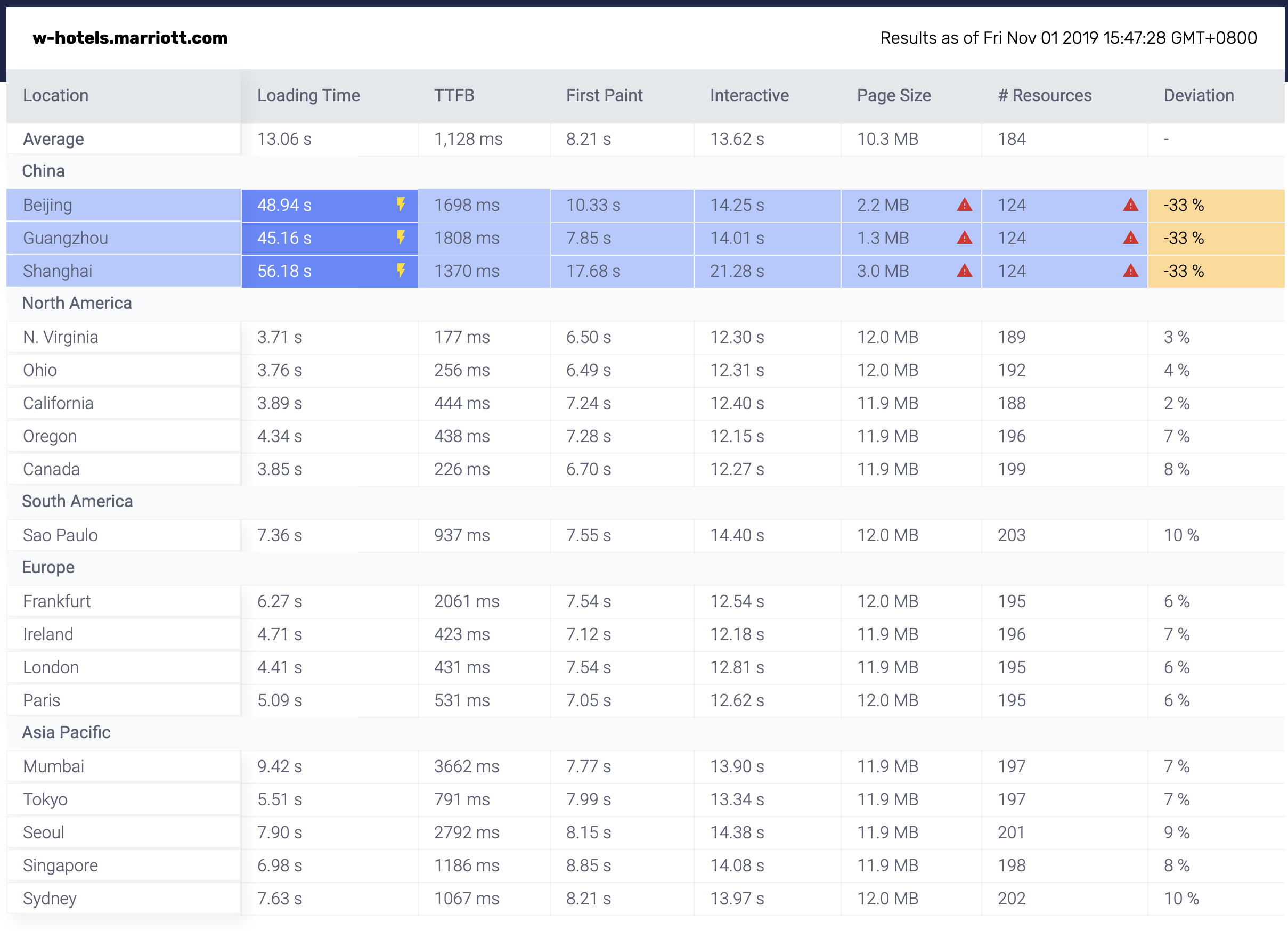
Need more information? If you hover over a location, you can also hit the 'waterfall' icon to view the specific resource breakdown/waterfall. For more background on this test, read this article which goes into more detail.
2. Visual Speed Test
Link: www.chinafy.com/tools/visual-speed-test
If you want a better feel for how the performance metrics are actually materialized in the user’s experience, this test shows how a web page loads in different locations.
You can compare the three different locations and use the slider to isolate specific times. You’ll also receive key performance metrics, including loading time and page size.
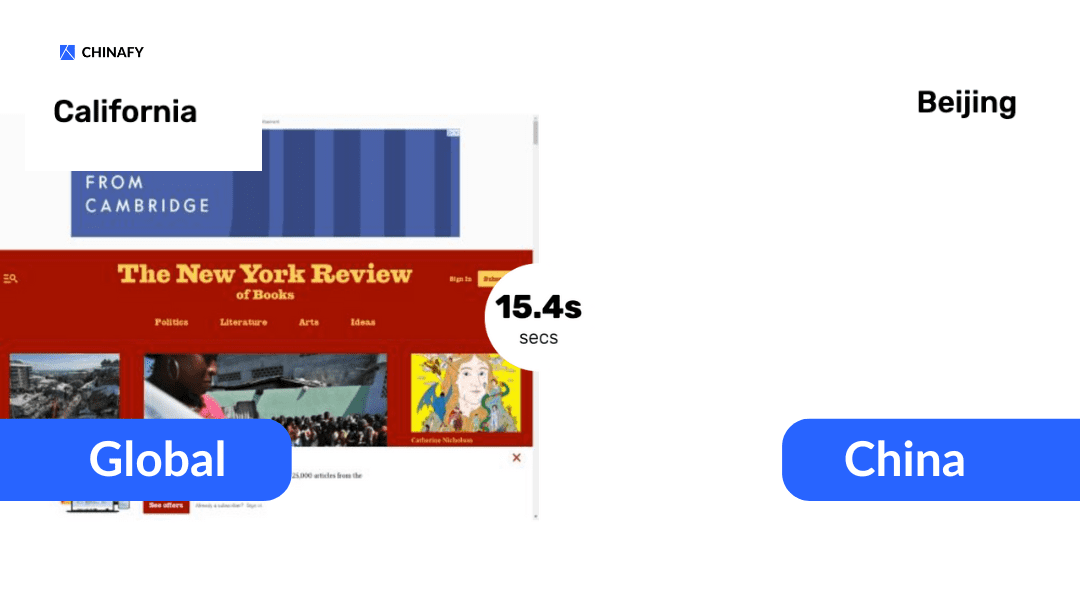
Chinafy Visual Speed Test
3. WebSpeedTest
Link: www.webpagetest.org
Considered the original gold standard, Webpagetest by Catchpoint is a great resource for a technical developer. Users have the option of ~30 test locations and ~70 browsers (as of 2025), as well as connection and dimension settings, plus advanced settings for developers.
The Webpagetest Starter Plan provides 150 free monthly test runs with sign in, or users can opt for a higher (paid) tier for more tests.
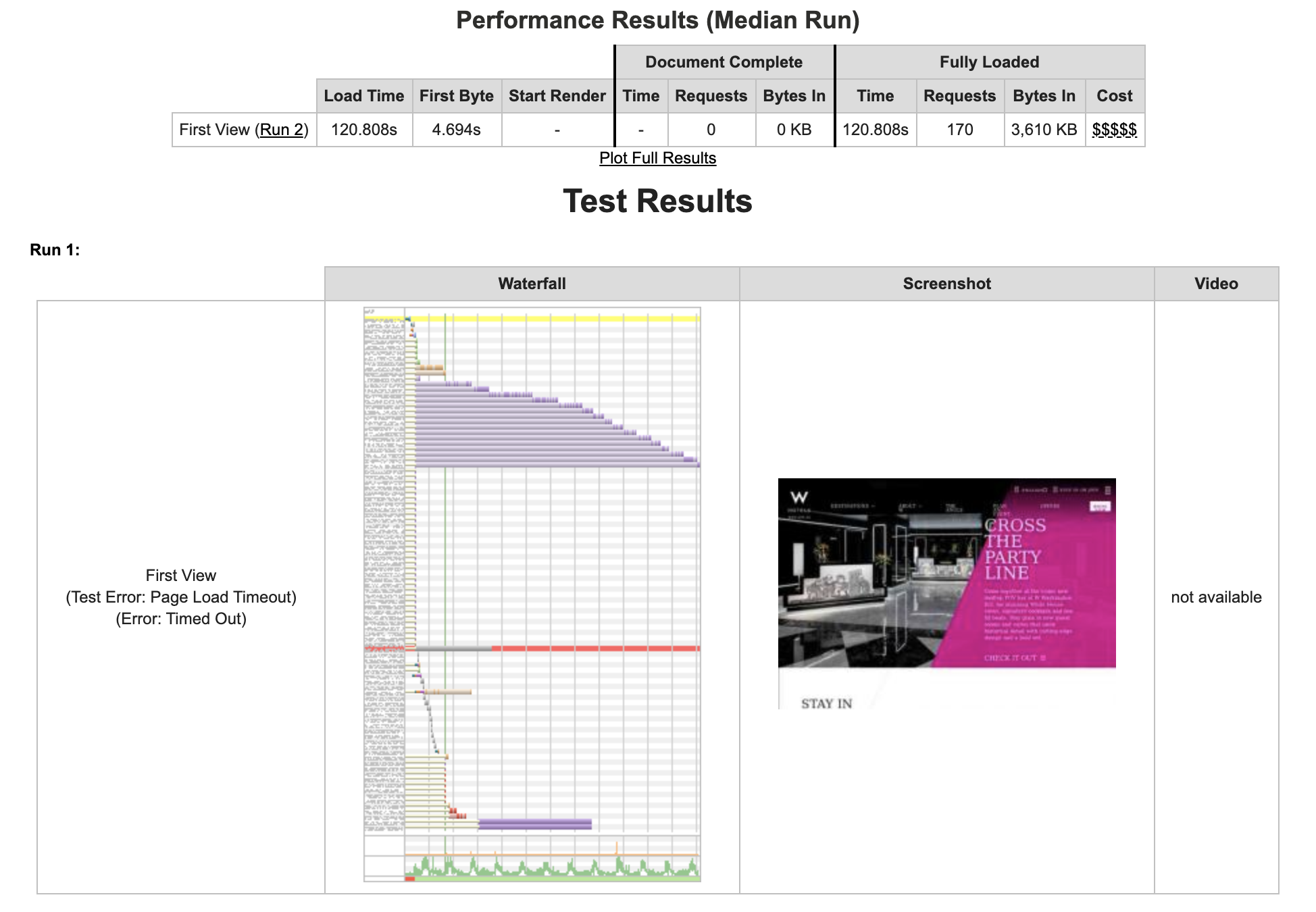
4. Webkaka (Chinese only)
Link: www.webkaka.com/webCheck.aspx
This site looks at technical loading time across a number of Chinese provinces. While this gives a quick overview of load times from different regions across mainland China, it doesn't dive into any other metrics to help explain 'why' sites don't load or what specifically the problems are.
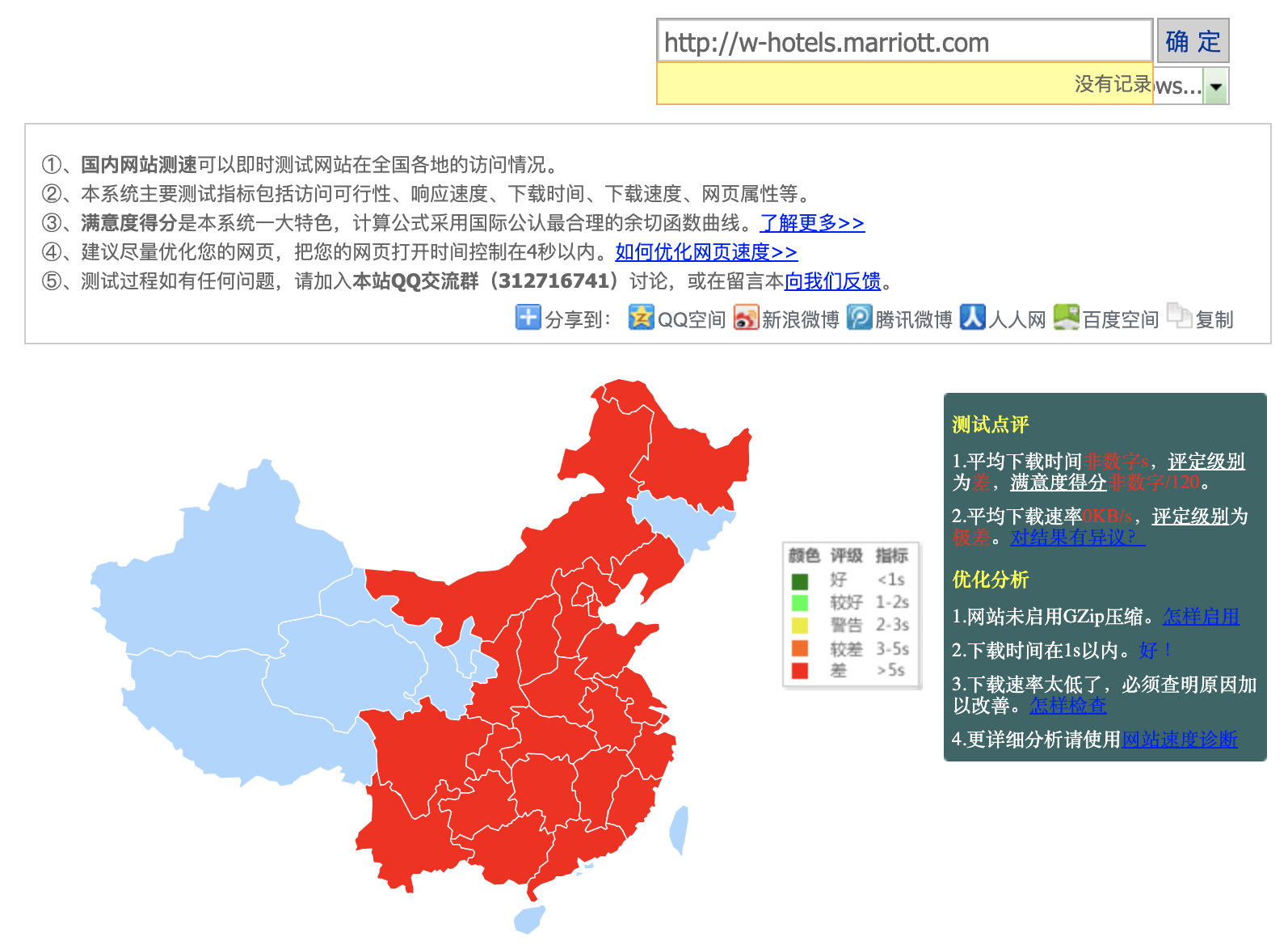
5. ChinaZ (Chinese only)
Link: http://tool.chinaz.com/speedtest
Similar to Webkaka, ChinaZ runs ping tests from a number of regions. Again, you won't be able to test page performance in more detail.
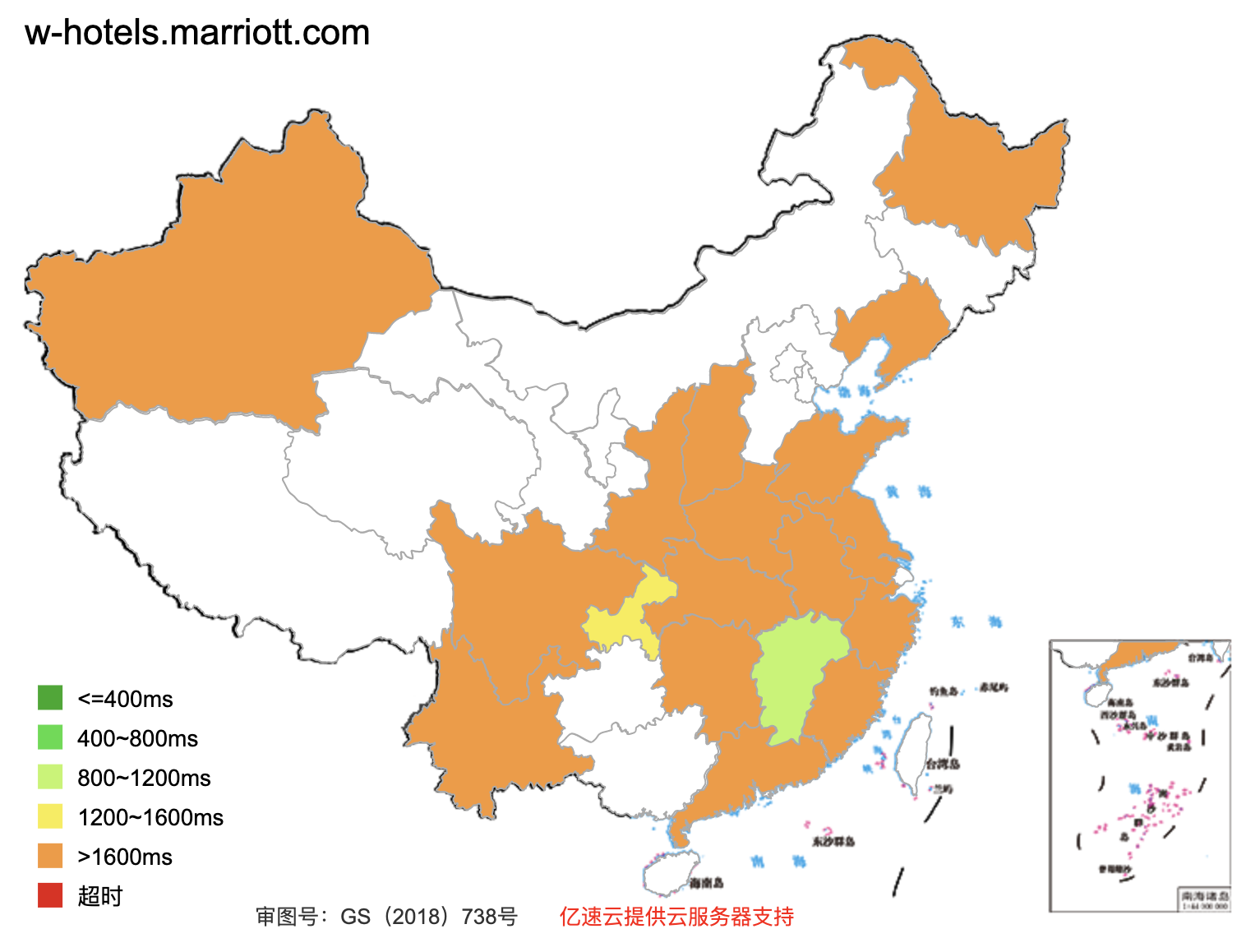
Not happy with how your website is loading for visitors in China? Contact Chinafy today to learn how we can make your site load fast and fully in China.



1 - Expected post-Chinafy results






























